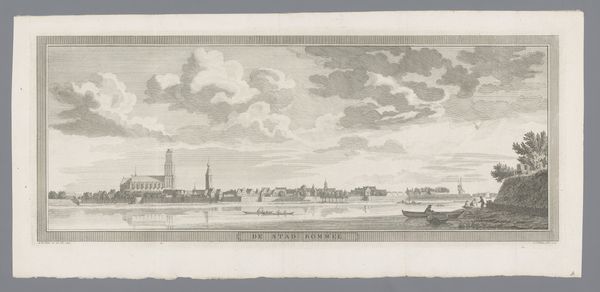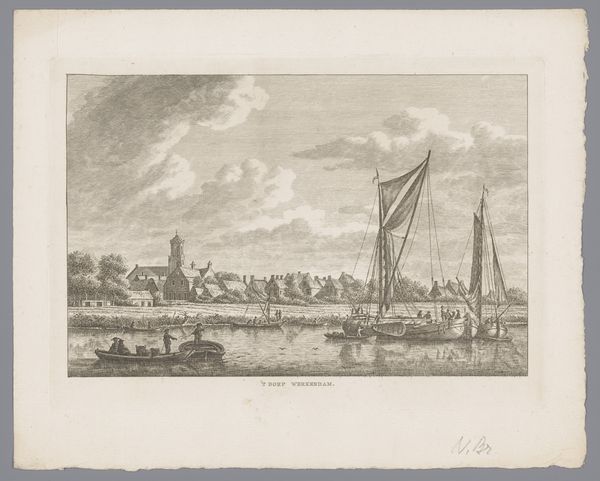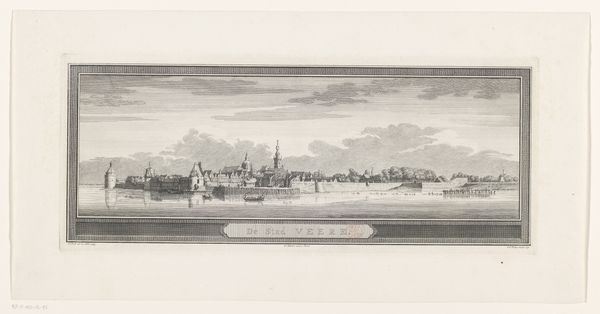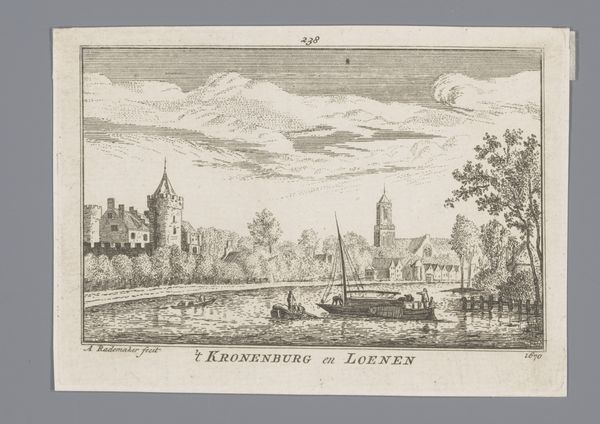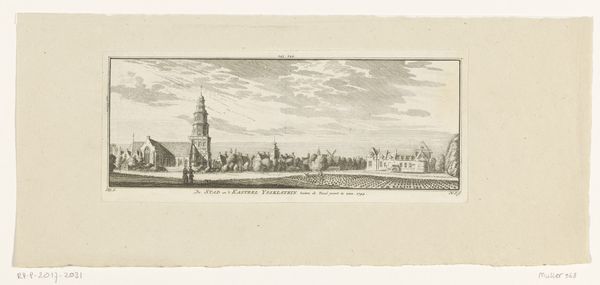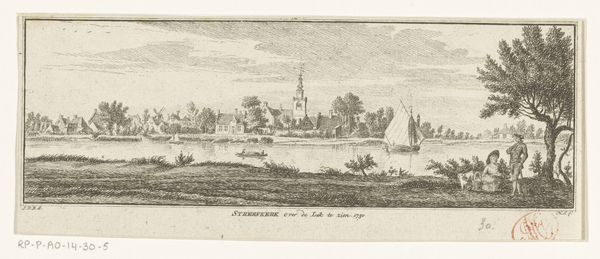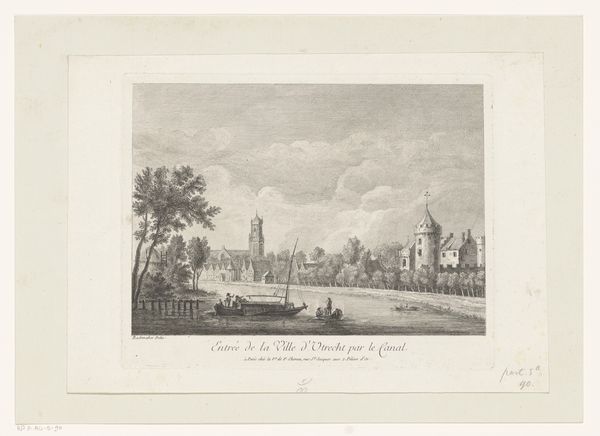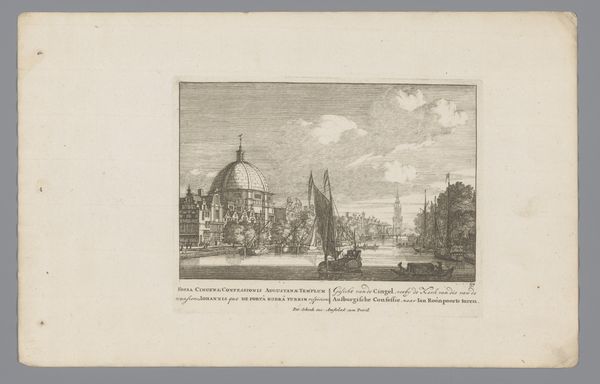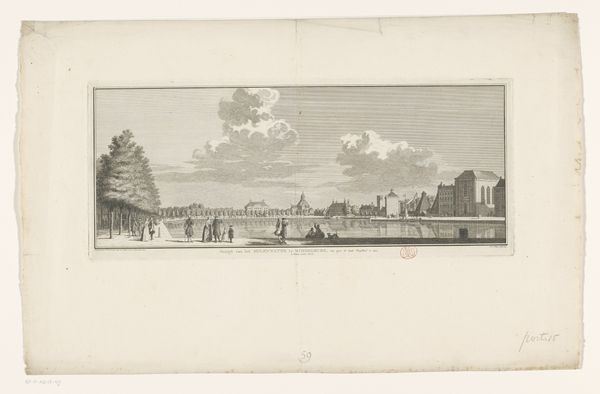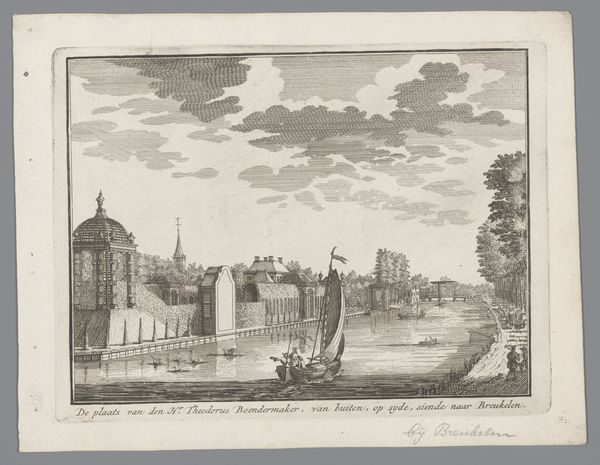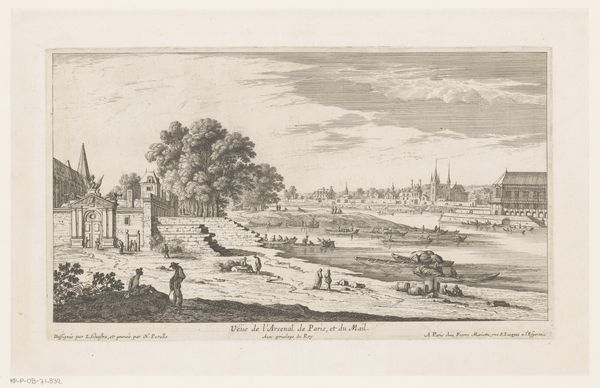
print, etching
#
baroque
#
dutch-golden-age
# print
#
etching
#
landscape
#
line
#
cityscape
Dimensions: height 174 mm, width 415 mm
Copyright: Rijks Museum: Open Domain
Curator: This delicate etching is Jan Caspar Philips's "Gezicht op Gouda," dating back to around 1743-1744. It resides here at the Rijksmuseum, offering us a window into the Dutch Golden Age through a city portrait. Editor: My first impression is serenity. The light, airy rendering almost softens the urban landscape. Even the details—the tiny figures in boats, the windmill—contribute to this pervasive tranquility. Curator: It is interesting to view such detailed urban imagery through the lens of the Dutch Golden Age. Prints like these were crucial in disseminating knowledge about cities, playing a vital role in constructing a shared civic identity. The image emphasizes the importance of trade. Editor: Absolutely. The windmill, aside from its functional role, has become almost a symbol of Dutch perseverance, hasn’t it? And water… water symbolizes the flow of goods, people, and ideas through a community. Curator: The print captures Gouda, but on a symbolic level, it speaks to broader ideals about urban life in the Netherlands and its place on the world stage. Notice how ordered the landscape is; Philips shows that urbanism could stand against what others perceived to be rural nothingness. Editor: Yet within this ordered composition, there are these incredible small elements, little ships with human cargo. I think that suggests something vital. Symbols for every single citizen being integrated into the identity of Gouda and of the country. Curator: These types of prints can teach us about what daily life would have been like for both the very wealthy and the much more numerous working class during this period. We see examples of this life through Philips' careful composition, where social roles were not merely incidental, but a cornerstone of this specific style. Editor: Considering this interplay—how symbols of civic pride are merged with the representation of the common citizens who embody them—gives us so much food for thought on our understanding of national pride. Curator: It reminds us that art is seldom isolated from society. Rather, it plays a significant role in how cities perceive their roles in the country's successes. Editor: Precisely. Contemplating how historical cityscapes such as this affect our modern perception offers intriguing insights.
Comments
No comments
Be the first to comment and join the conversation on the ultimate creative platform.
